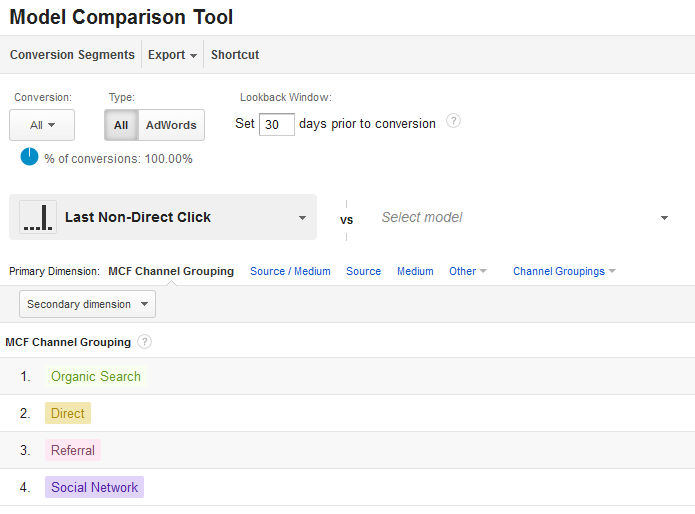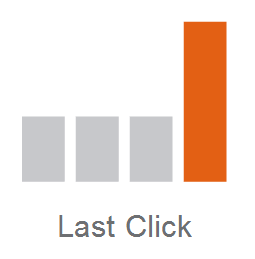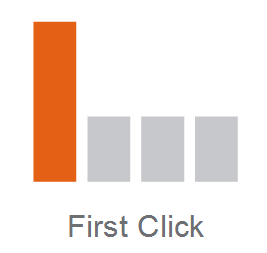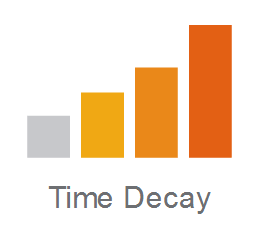When any company engages in multiple channel marketing the dilemma of attribution occurs – In other words deciding which channel is responsible for the ultimate conversion. In a world where the typical customer journey will contain numerous touch points such as organic search, paid search, social media, email and in-store it pays to understand the basics of attribution.
How Google Analytics Applies Attribution
By default Google Analytics will use the ‘last non-direct click’ attribution model. This model gives credit to the last channel and source the user arrived from. The only exception to this are users coming through the ‘direct’ channel. Because ‘direct’ is seen as essentially unknown in Google’s eyes the credit will be applied to the most recent non-direct channel. If there is nothing previous to ‘direct’ then it will be credited.
As you can see there are serious flaws with only looking at the ‘last non-direct click’ model. It clearly favours the channels that drive the conversions at the end of the buying cycle and not the ones that lead to increased brand awareness at the beginning of the cycle.

Let’s take a look at what other attribution models are optional in Google Analytics. These can be viewed in the Model Comparison Tool.
Conversions > Attribution > Model Comparison Tool
Optional Attribution Models

Last click gives all credit to the last external channel a user came from before converting.

First click gives 100% of the credit to the first external channel a user visited from.

Time decay gives the majority of weight to the last interaction and scales down accordingly, with less going to the second interaction and so on. This follows the half-life decay model.

Linear gives equal weight to each channel / source involved in the conversion.

Position-based give 40% of the attribution to the first interaction, 40% to the last and spreads the remaining 20% across all other interactions.
Conclusion: Which Model Is Best?
Attribution is an important concept for understanding your marketing channels. Each model provides a valuable insight and depending on your business structure one could be more valuable than another.
For example if you are engaging in a branding campaign rather than a direct response campaign last click attribution certainly wouldn’t give you a clear picture. Something like first click or position-based would be a far more suitable measure of success. This is because they take into account interactions at the beginning of the buying cycle.
Everyone should take the time to explore which model best suits their marketing style and overall business goals.
Hero Image Source: Pixabay





